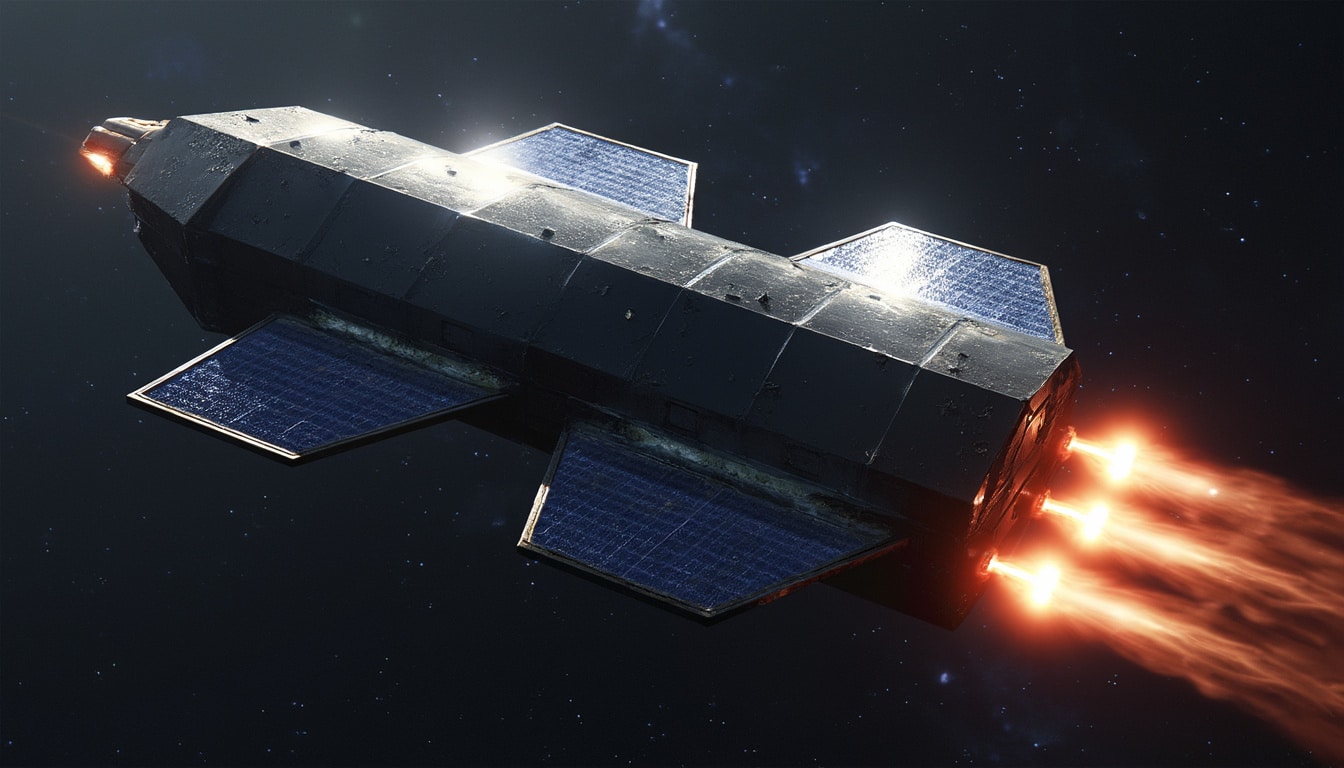NASA’s Psyche mission represents a groundbreaking venture into deep space, aiming to unlock the secrets of a unique metal-rich asteroid also named Psyche. Launched in October 2023, the spacecraft’s journey is crucial for our understanding of asteroids and their role in the formation of our solar system. However, an issue has recently emerged concerning the spacecraft’s electric thrusters, pivotal to its propulsion system. This article explores the intricacies of the electric propulsion system, the current investigations being conducted by NASA, and the broader implications for space exploration.
Understanding the Psyche Mission
The Psyche mission is designed to explore the asteroid Psyche, which resides in the main asteroid belt between Mars and Jupiter. Unlike typical rocky asteroids, Psyche is believed to be composed largely of metallic iron and nickel, providing a unique opportunity to study building blocks of planetary cores. The mission, carried out by NASA in collaboration with various institutions, aims to answer fundamental questions about planetary formation and composition.

The Journey to Psyche
Launched aboard a Falcon Heavy rocket, the Psyche spacecraft will take about six years to reach its target. Utilizing a series of strategic maneuvers, including a flyby of Mars to gain speed, the spacecraft is expected to arrive at Psyche in August 2029. This timeline incorporates advanced on-board navigation systems and electric propulsion technology designed to optimize its route through the cosmos.
Challenges with Electric Thrusters
One of the most critical aspects of the Psyche mission is its electric thrusters, which are designed to provide efficient propulsion for the spacecraft over long distances. Recently, NASA identified an issue where the electric thrusters shut down due to a drop in pressure in the xenon propellant line. This malfunction raised some concerns regarding the effectiveness and reliability of the propulsion system as the spacecraft progresses on its journey.
Current Investigations
Following the shutdown incident on April 1, the Jet Propulsion Laboratory (JPL) immediately initiated an investigation into the cause of the pressure drop. Although the pressure decreased from 36 psi to 26 psi, officials stated that, as of now, this is not a major concern. The engineering team is exploring alternatives, including the possibility of switching to a backup propellant line until the issue is resolved. NASA’s commitment to redundancy in their engineering processes helps ensure that challenges such as these can be effectively managed without jeopardizing the overall mission.
The Role of Electric Propulsion in Space Exploration
The innovative propulsion system used in the Psyche mission is groundbreaking for space exploration. Aerojet Rocketdyne developed the electric thrusters, which are significantly more efficient than conventional chemical rockets. This technological leap not only allows for longer missions but reduces the amount of propellant needed, enabling spacecraft to travel farther and explore more distant regions of our solar system.
Advantages of Electric Propulsion
Spacecraft equipped with electric propulsion systems can gradually increase their velocity over extended periods, making them ideal for deep space missions like Psyche. Some advantages of electric propulsion include:
- Higher efficiency compared to traditional rockets.
- Room for more payload due to reduced propellant requirements.
- Ability to conduct long missions without needing frequent refueling.
- Lower driving costs for lengthy journeys.
The Future of Psyche and Its Scientific Contributions
The impending arrival of the Psyche spacecraft at its namesake asteroid will potentially add tremendous value to our comprehension of planetary science. By focusing on a metallic asteroid, researchers expect to gain deeper insights into the cores of terrestrial planets, including Earth, and understand more about the early solar system’s dynamics. The NASA JPL team’s advancements in robotic missions will continue to pave the way for similar future explorations.
| Criteria | Conventional Rockets | Electric Propulsion |
|---|---|---|
| Efficiency | Lower | Higher |
| Propellant Requirement | Higher | Lower |
| Acceleration | Quick bursts | Gradual increases |
| Mission Duration | Limited | Extended |
The lessons learned from addressing the current challenges with the Psyche spacecraft’s electric thrusters will no doubt inform future missions. Space exploration depends heavily on successful partnerships between technology and teamwork. Continuous innovation in propulsion systems and mission design can help tackle the complexities involved in uncovering the mysteries of our solar system.
For those interested in staying updated on the Psyche mission and more advancements in space exploration, check the credible resources available. Websites like Space News and NASA’s site offer essential information on the mission’s progression and technological breakthroughs.

The future of the Psyche mission remains bright. As technological advancements continue to propel space exploration forward, the quest to understand the universe grows ever more captivating for scientists and enthusiasts alike. Each mission provides new insights and stories that fuel our collective fascination with the cosmos.




Leave a Reply